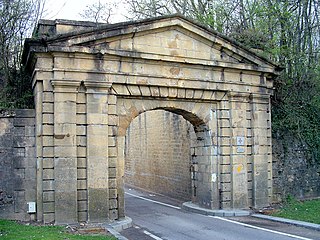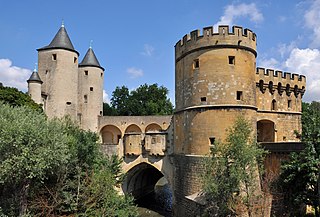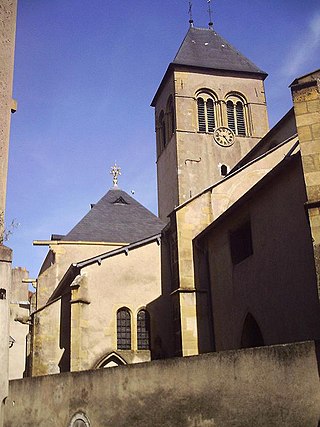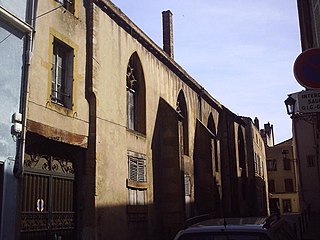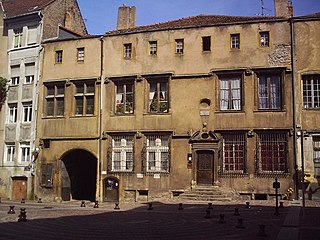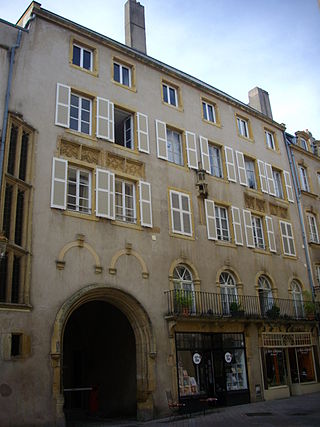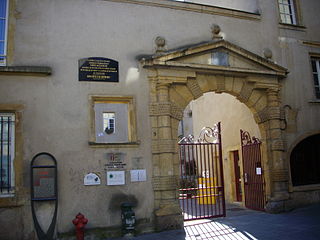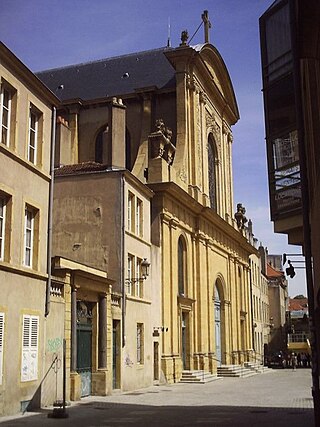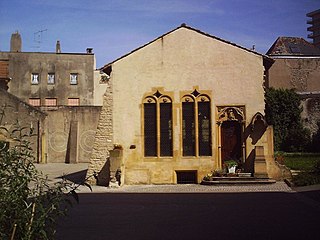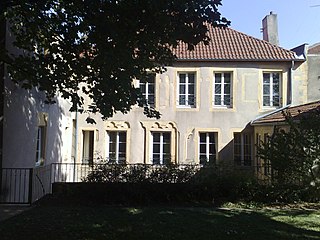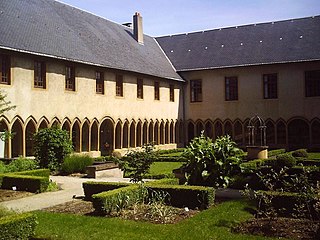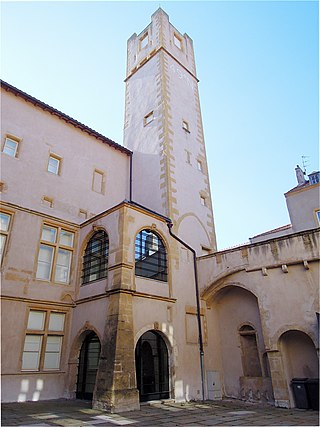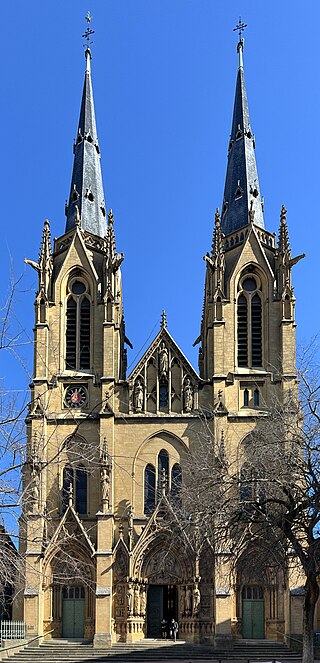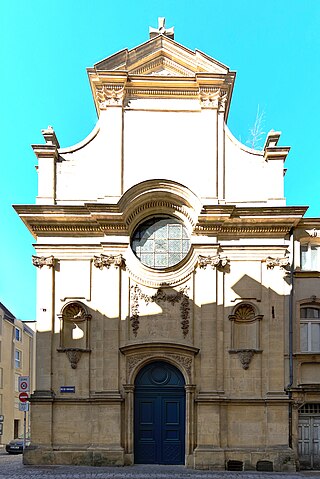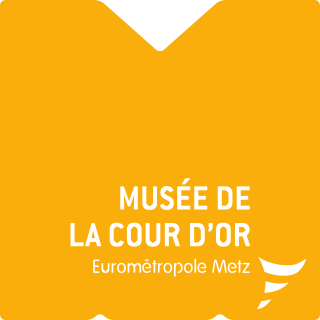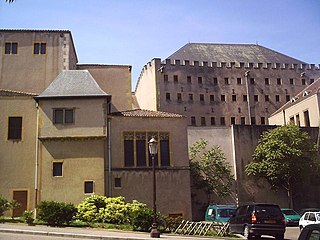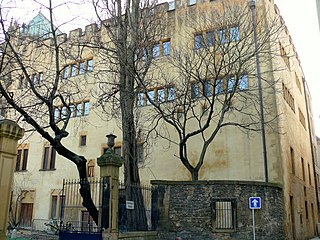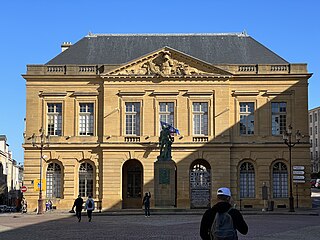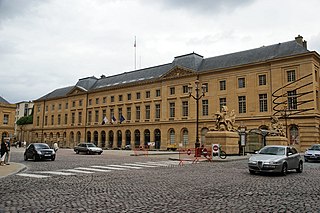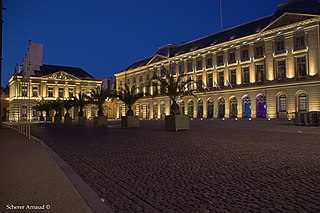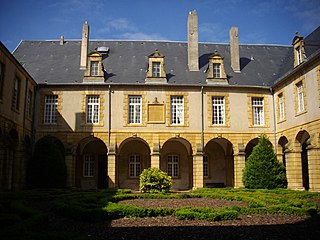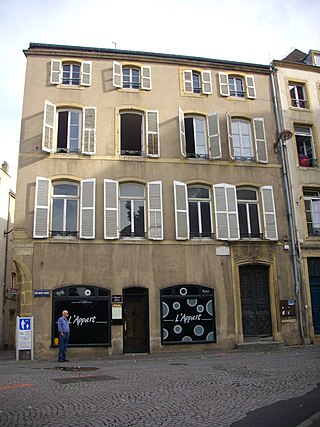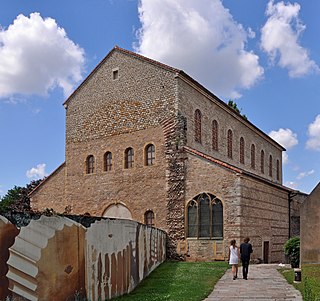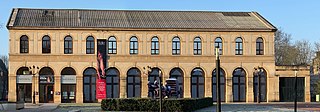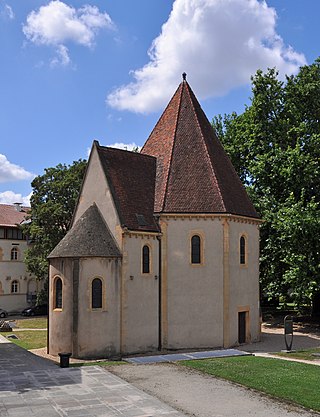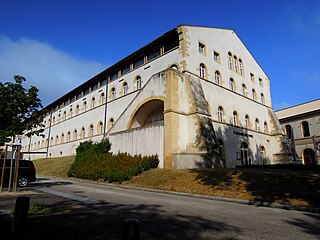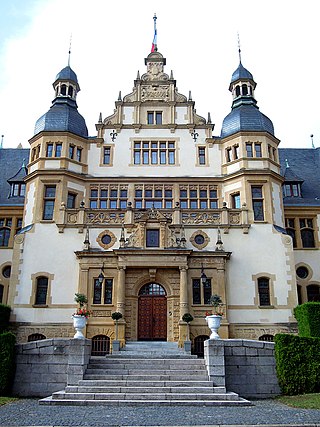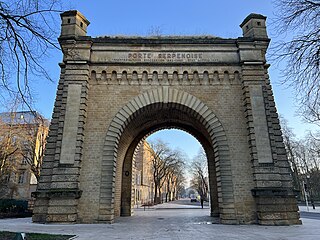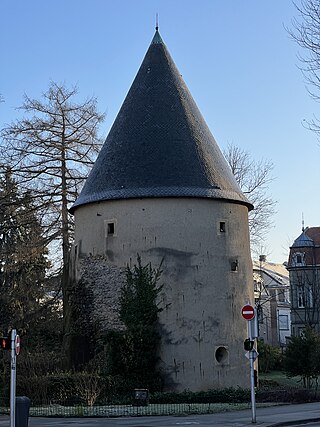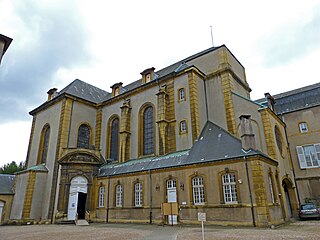Self-guided Sightseeing Tour #1 in Metz, France
Legend
Tour Facts
7.4 km
154 m
Experience Metz in France in a whole new way with our free self-guided sightseeing tour. This site not only offers you practical information and insider tips, but also a rich variety of activities and sights you shouldn't miss. Whether you love art and culture, want to explore historical sites or simply want to experience the vibrant atmosphere of a lively city - you'll find everything you need for your personal adventure here.
Individual Sights in MetzSight 1: Fort de Bellecroix, Porte de Sarrelouis
The Porte de Bellecroix or Sarrelouis is one of the many gates of the medieval ramparts of Metz.
Sight 2: Porte des Allemands
The Germans' Gate is a medieval bridge castle and city gate in Metz, France. It is "a relic of the medieval fortifications, with two 13th century round towers and two gun bastions of the 15th century." It is a monument historique of France.
Sight 3: Église Saint-Eucaire
The Church of Saint-Eucaire is a Roman Catholic church located between Rue Saint-Eucaire and Rue des Allemands, in the Outre-Seille district of Metz, Moselle.
Sight 4: Église de la Confession d'Augsbourg
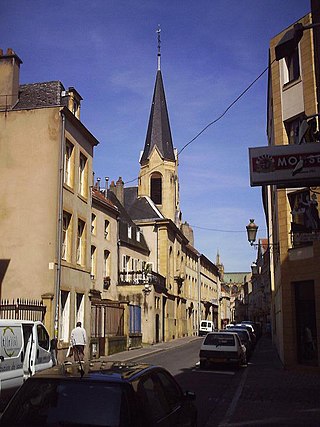
The Lutheran Temple of Metz is a Protestant Lutheran church located in Metz. The parish is a member of the Union of Protestant Churches of Alsace and Lorraine.
Sight 5: Église Saint-Maximin
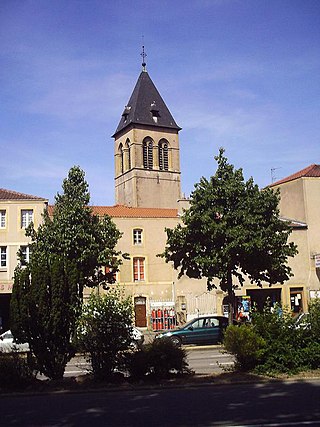
The Church of Saint-Maximin is a Roman Catholic church located near the Lutheran Temple in the Ancienne Ville district of Metz, Moselle. It is dedicated to Bishop Maximinus of Trier, who died in 347.
Sight 6: Église Saint-Étienne-le-Dépenné
The Church of Saint-Étienne-le-Dépenné is a Catholic church located on rue Gaudrée in Metz, near the church of Saint-Maximin.
Sight 7: Hôtel de Gournay-Burtaigne
The Hôtel de Burtaigne is a patrician residence in Metz, dating from the Renaissance, built in the last years of the Metz Republic by a family member of the paraiges, the Gournays. It has been classified as a Historic Monument since 2006.
Sight 8: Hospice Saint-Nicolas
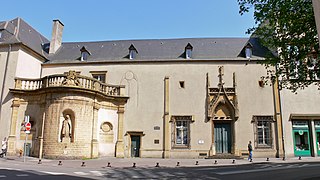
The Hospice Saint-Nicolas is the oldest hospital in Metz. Attested as early as the eleventh century, the current buildings date from the thirteenth century to the nineteenth century. At the beginning of the twentieth century, part of the building was used as a learning examination centre. It closed its doors in 1986. Part of its old buildings housed an agency of the Pôle emploi (ANPE) until 2009.
Sight 9: Hôtel de Heu
The Hôtel de Heu is a private mansion in the city of Metz. Located at 19 rue de la Fontaine, it was built at the end of the fifteenth century by and for La Maison de Heu, a patrician family, part of the parish. It is classified as a historical monument.
Sight 10: Église Saint-Martin
The Church of Saint-Martin is one of the oldest Catholic churches and parishes in Metz. It is located in the Metz-Centre district, 25 rue des Huiliers. The patron saint is Bishop Martin of Tours. Its bell tower rings from 8 a.m. to 8 p.m.
Sight 11: Hôtel de Gournay
The Hôtel de Gournay, located on rue du Grand Cerf in the Metz-Centre district, is one of the historic buildings of the city of Metz.
Sight 12: Église Notre-Dame
Notre-Dame de l'Assomption is a church situated on the Rue de la Chevre, formerly the Rue de la Cheuve, in the city of Metz in Lorraine, France. Administratively it is part of the Roman Catholic Diocese of Metz.
Sight 13: Chapelle de la Miséricorde
The Chapel of Mercy is a former Catholic building of worship located on rue de la Chèvre in Metz-Centre in the Metz-Centre district opposite the church of Notre-Dame-de-l'Assomption.
Sight 14: Maison des Têtes
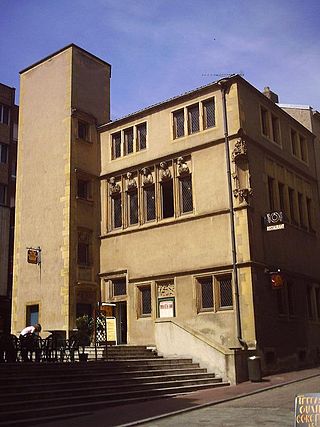
The Maison des Têtes de Metz is a Renaissance-style house located on Rue En Fournirue, in the city centre of Metz. She is known for her façade sculptures.
Sight 15: Chapelle Saint-Genest
The former chapel of Saint-Genest, disused, was a Catholic building of worship located on the slopes of the Sainte-Croix hill behind the Fournirue in Metz. It was dedicated to the actor Saint Genest, martyred in Rome.
Sight 16: Hôtel de Malte
The Hôtel de Malte is a medieval residence, located on rue des Murs, on the Sainte-Croix hill, in Metz, owned by the Order of Saint John of Jerusalem from 1565 to the Revolution, just like the neighbouring Saint-Genest chapel.
Sight 17: Cloître des Récollets
The Cloister of the Recollets is a former medieval convent in the Ancienne Ville district of Metz in Moselle. The current buildings house Jean-Marie Pelt's European Institute of Ecology and the municipal archives.
Sight 18: Hôtel de la Bulette
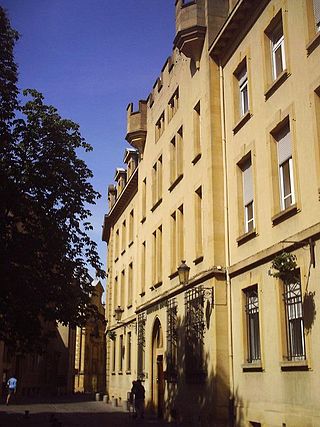
The Hôtel de la Bulle or de la Bulette, located on Place Sainte-Croix in the old town district of Metz, is a Gothic building built in the fourteenth century and completely remodelled in the 1930s.
Sight 19: Ancien hôtel Saint-Livier
The Hôtel Saint-Livier, located at 1 rue des Trinitaires in Metz, is the oldest civil building in the city, both a defensive castle and a luxurious residence.
Sight 20: FRAC Lorraine
The Frac Lorraine, also known as 49 Nord 6 Est, is a public collection of contemporary art of the Grand Est region in France. It is located in Metz.
Sight 21: Église Sainte-Ségolène
The Sainte-Ségolène church is a Catholic church located on Place Jeanne-d'Arc on the Sainte-Croix hill, in the Ancienne Ville district of Metz. The building has been partially classified and listed as a historical monument since 29 September 1981. It has been listed in its entirety since April 4, 2013.
Sight 22: Église des Trinitaires
The Church of the Trinitarians is located in the commune of Metz in the Moselle department in France.
Sight 23: Musée de la Cour d'Or
The Musée de La Cour d'Or is a museum of art and history located in the centre of Metz, in Lorraine. Founded in 1839, it was named the Musée de la Cour d'Or in 1988, in reference to the palace of the kings of Austrasia whose museum occupies the presumed historical site. The museum is currently managed by the metropolis of Metz. The institution brings together within the same complex an archaeological museum with rich collections of Gallo-Roman and medieval art, a museum of medieval and Renaissance architecture, and a museum of fine arts.
Sight 24: Grenier de Chèvremont
The granary of Chèvremont is an imposing municipal granary built in Metz in 1457 and topped with battlements.
Sight 25: Grange des Antonistes
The Antonists' barn is a medieval warehouse of the former Saint-Antoine commandery dating from the fourteenth century. It is located on rue des Piques, below the cathedral in the old Metz district.
Sight 26: Office de Tourisme
The guardhouse, located on Place d'Armes in Metz, houses the town's tourist office. Designed by Jacques-François Blondel at the same time as the City Hall, it faces the old Parliament.
Sight 27: Hôtel de ville de Metz
The Hôtel de Ville is a municipal building in Metz, Moselle, northeast France, standing on the Place D'Armes. It was designated a monument historique by the French government in 1922.
Sight 28: Place d'Armes - Jacques-François Blondel
The Place d'Armes is a rectangular cobbled square in Metz.
Sight 29: Cathédrale Saint-Étienne

Metz Cathedral is the cathedral of the Catholic Diocese of Metz, the seat of the bishops of Metz. It is dedicated to Saint Stephen. The diocese dates back at least to the 4th century and the present cathedral building was begun in the early 14th century. In the mid-14th century, it was joined to the collegiate church of Notre-Dame, and given a new transept and late Gothic chevet, finished between 1486 and 1520. The cathedral treasury displays a rich collection assembled over the long centuries of the history of the Metz diocese and include sacred vestments and items used for the Eucharist.
Sight 30: Abbaye Saint-Arnould
The Abbey of Saint-Arnould, St. Arnold, Saint-Arnoult or Abbey of the Holy Apostles is a Benedictine abbey residing in Metz since the 6th century.
Sight 31: Maison Natale de Verlaine
The birthplace of Paul Verlaine is located in the city of Metz, in the Grand Est region.
Sight 32: Église Saint-Pierre-aux-Nonnains
The Church of Saint-Pierre-aux-Nonnains is a fourth-century Gallo-Roman building located in Metz, Lorraine. The building is an old palaestra of a thermal complex, or a civil basilica, converted into an abbey church before the seventh century AD. In the seventh century, the building was the church of a Benedictine abbey, which settled on the site.
Sight 33: Arsenal de Metz
The Ney arsenal, located at 3 avenue Ney in Metz in Moselle, was a military building under the Second Empire intended for the storage of arms and ammunition for the Metz garrison. Rehabilitated and refurbished by Ricardo Bofill, in 1989 the place became the Arsenal, a set of performance and exhibition halls, essentially devoted to classical music and contemporary dance, where many recitals and concerts are represented. Since February 2024, the building has been named Arsenal-Jean-Marie-Rausch, in tribute to the former mayor of Metz, who died at the beginning of the year.
Sight 34: Chapelle des Templiers
The Templar Chapel, the only vestige of a Templar commandery founded in the twelfth century, is located in the Arsenal district of Metz.
Sight 35: Magasin aux Vivres
The food store is a former military building in the citadel of Metz built for the storage of food. The building is now used as a luxury hotel and gourmet restaurant.
Sight 36: Palais du Gouverneur
The Governor's Palace, formerly known as the Das General-Kommando, is a residence built in Metz between 1902 and 1905 to serve as a pied-à-terre for Emperor Wilhelm II. It is located in Square Giraud in the south-west of the Metz-Centre district, but remains historically linked to the imperial district further east. It has been listed in the supplementary inventory of historic monuments since 1975.
Sight 37: Porte Serpenoise
The Serpenoise Gate is a city gate located at the corner of Avenue Robert Schuman and Rue du Général Gaston-Dupuis in the Metz-Centre district. It remains the symbolic witness associated with several historical events in the city of Metz, of which it marked the southern limit from the third century when the Roman rampart was built, until the beginning of the twentieth century when the enclosure was destroyed.
Sight 38: Tour Camoufle
The Camoufle Tower is a vestige of the old medieval wall of Metz in Moselle. It is one of the few towers of the medieval enclosure to have been preserved.
Sight 39: Église Sainte-Glossinde
The abbey church of Sainte-Glossinde is the church of a former Benedictine abbey founded around 604 by Glossinde of Champagne (580–610), in the city of Metz, then capital of the kingdom of Austrasia. It has been remodelled over the centuries and still exists, the abbey being the seat of the bishopric of Metz since 1802.
Share
Disclaimer Please be aware of your surroundings and do not enter private property. We are not liable for any damages that occur during the tours.
GPX-Download For navigation apps and GPS devices you can download the tour as a GPX file.
